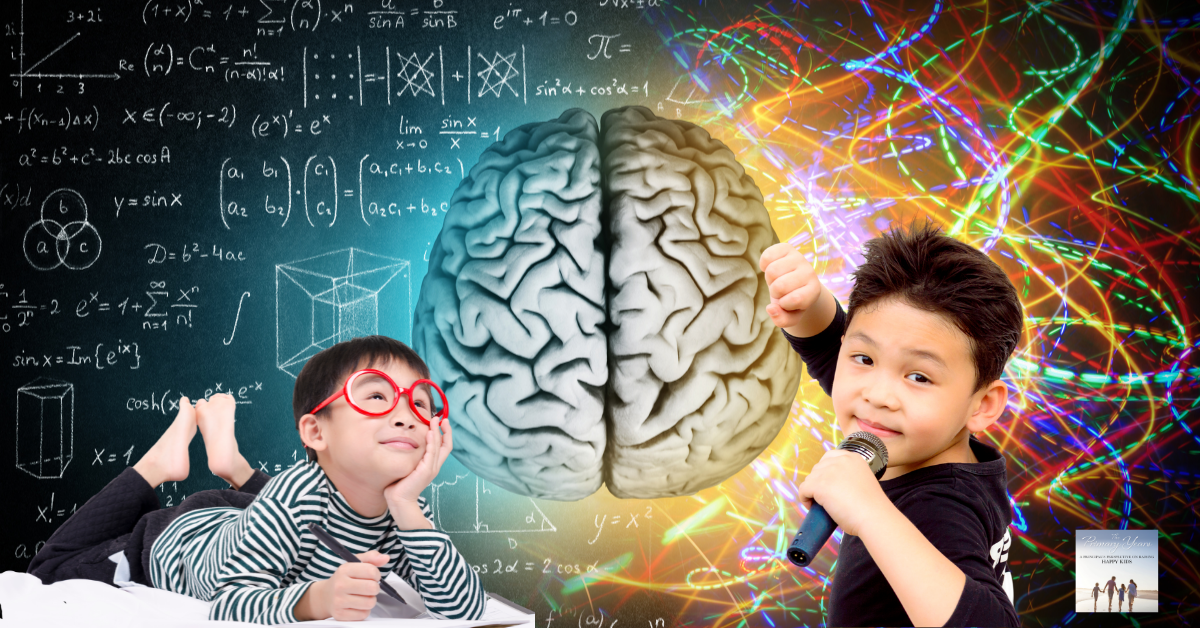Developing the two halves of our brain.
Both sides need good interconnection to think well.
If your child is actively engaged in sports that is a wonderful beginning to balancing both sides of the brain. We are born with this amazing computer but as a muscle we need to give it considerable exercise. Neuroscientists have found that the two sides of the brain are engaged at the same time. Left brain people focus on logical and clear thinking. They are drawn to order and structure being analytical and focusing on accuracy. If your child is right brain focused, it is more about creativity, emotions and aesthetics, intuition and thoughtfulness. They are your sensitive children.
Think about your child for a moment. Can you see some aptitude in other direction? The trick is to balance both sides giving the individual a chance to develop greater potential in their thinking and processing.
It is natural to drift back to what you are most comfortable with and this can easily happen when a child does a project, writes stories, plays games etc. A child who loves order and takes pride in having everything clearly laid out, can sometimes become anxious when taking risks. Often they don’t like failure and become anxious when they are not prepared.
On the other hand, children who are very creative can be far too sensitive and not cope with criticism and become quite unsettled when people challenge them. In reality, we can probably see both elements in our child from time to time, but nonetheless, it is worthwhile encouraging your child to work on balance.
Consider:
Try to practice reading at different speeds and putting emphasis on different words to create different feelings about the story.
Play ball games where children use both hands for catching or change the rules to encourage different ways to think through the game.
When a child creatively writes a story invite them to itemise the main concepts.
Involve your child in learning a craft that requires change and pattern building. Activities such as knitting, sewing, sculpture etc. are wonderful for learning order and design. Simply reading a pattern requires thinking on a deeper level.
I know how creative Lego is but it could be used to think through different ways to be creative and not just building structures. Challenging the thinking in this area really gets the brain working.
Cooking and improving recipes is another great way of challenging the thinking process.
It can be as simple as having a conversation about how the practice went and then ask your child to suggest strategies that would improve the game.
Leave lists of tasks to be done on the fridge. They are to be marked off when done. Sometimes vary the lists and invite your child to draw up their own or rewrite amended lists.
When visiting good games shops you will find quite a variety of games that challenge the child to be creative and at the same time think logically. Spend some time perusing these games as they can be great family fun and really stretch the thinking in different ways.
Highly sensitive children can be more emotional. You may need to spend more time with them conditioning them to think about positive thoughts when they become overwhelmed by issues. They will need to learn strategies to help them overcome sensitive feelings.
Teachers know to change the look of the classroom around to stimulate different thinking and to challenge the children with questioning and memory.
These exercises are illustrations of developing a balance and recognising that at times you need to refocus your child when the emphasis lies too heavily on one side of the brain. The more children exercise their thinking in various ways the greater capacity they have to learn and accept challenges that come their way.
‘When you want new results, it requires new thinking.’ -Richard Brandler
